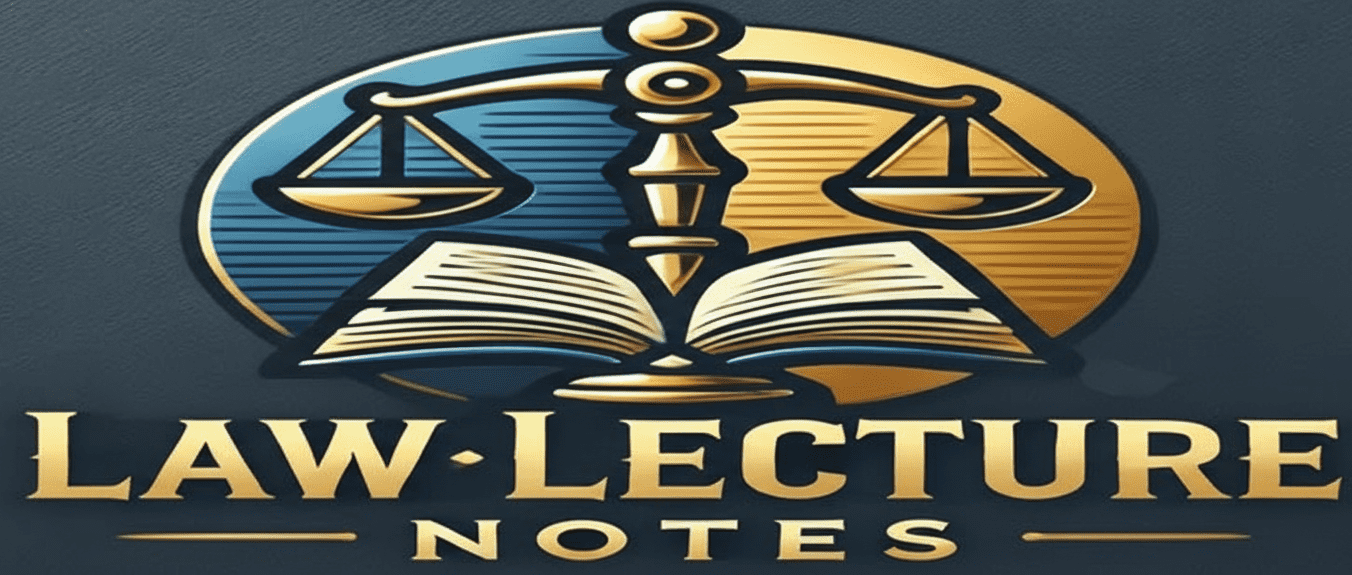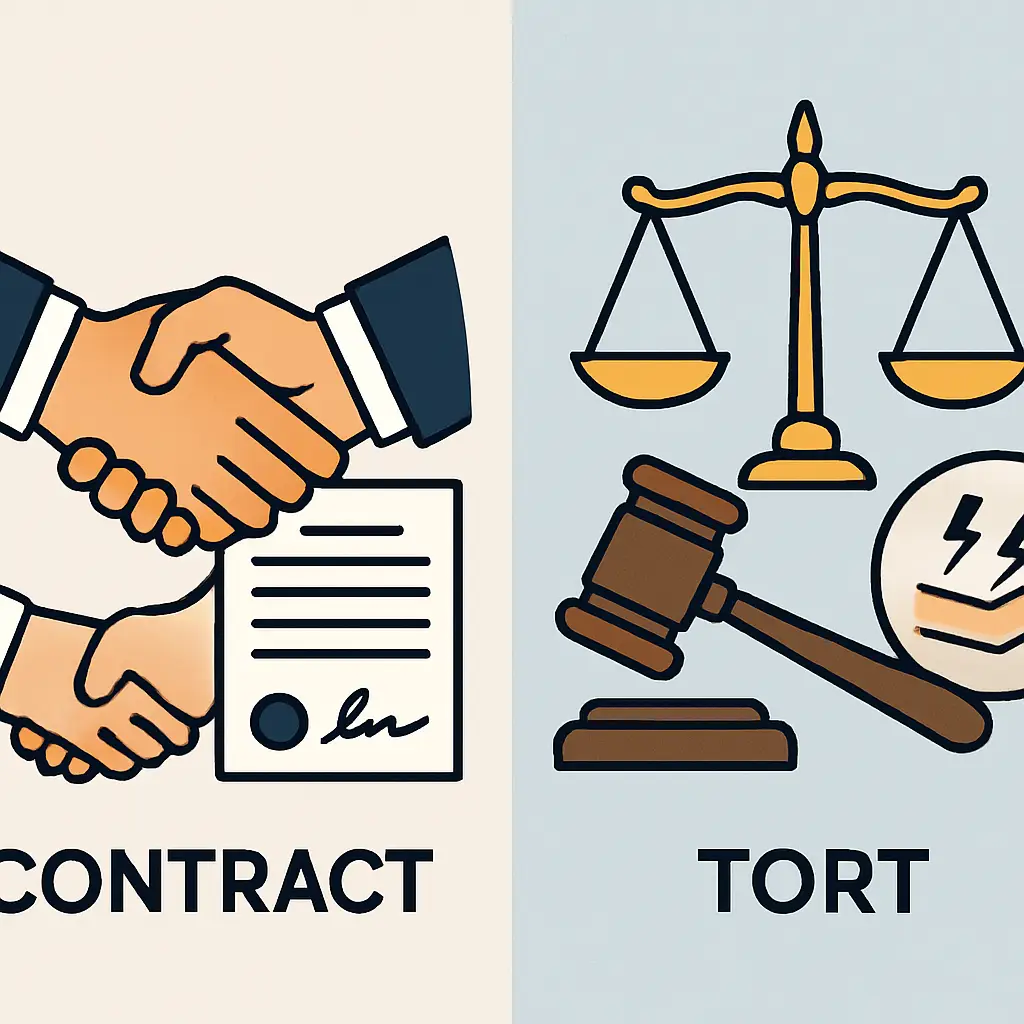Tort and contract law form two major fields within civil law, each governed by distinct principles and addressing different types of legal duties.
Foundational Differences
A contract is based on mutual agreement between the parties—consent forms its foundation. By contrast, a tort occurs irrespective of the victim’s consent; tortious acts are often committed without, or even against, the affected party’s wishes.
- Privity:
Contracts require a special relationship (privity) between the parties, limiting obligations and rights to those involved in the agreement. Torts, however, do not require such privity; the duty in tort is generally owed to society at large. - Nature of Obligation:
In contract law, the duty arises from what the parties have agreed to, and obligations are owed specifically to one another (right in personam). In tort law, duties are imposed by law, not by consent, and are usually owed to individuals as members of the community (right in rem). - Examples:
If one person assaults another, or damages their property without justification, this is a tort—the law imposes a general duty not to harm others. In contrast, if two parties contract for the sale of goods and one fails to deliver, only the aggrieved party can seek a remedy for breach of that contract.
Additional distinctions include the fact that, in contract cases, the motive for the breach is usually irrelevant. In tort cases, however, the motive may influence the outcome, especially in instances involving malice or fraud. Damages in contract are typically limited to compensation, whereas in torts—especially where the defendant acted with egregious intent—aggravated or exemplary damages may be awarded as punishment and deterrence.
A contractual limitation clause is enforceable only among parties to that contract and does not protect against tort claims brought by third parties. Overall, tort law tends to focus on preventing or allocating losses, while contract law’s primary aim is to uphold and enforce the terms of agreements.
Overlapping and Blurred Boundaries
Although these conceptual differences are fundamental, some acts can give rise to both tort and contractual liability. Professionals such as transporters, doctors, or lawyers who contract with clients for specific services may be liable either for breach of contract or for tortious conduct resulting from negligence. For instance, if a father hires a doctor for his son, and the doctor is negligent, the father may sue in contract, while the son (who lacked contractual privity) can sue in tort.
A landmark case in this area, Donoghue v. Stevenson, established that even in the absence of a direct contract, a manufacturer may owe a duty of care in tort to a consumer.
In some circumstances, duties in tort can arise where some form of consent or prior arrangement is present. For example, a property owner owes a higher duty of care to guests who have been granted permission to enter, compared to trespassers. Similarly, someone giving gratuitous advice—where others reasonably rely on their expertise—can be treated as owing a quasi-contractual duty, despite the absence of a formal contract.
Modern law recognizes that a claimant may pursue remedies in both tort and contract, especially where professional negligence is involved. Courts have increasingly held that concurrent liability (arising from both contract and tort) is available, particularly for professionals such as solicitors, stockbrokers, and architects. The duty of care owed by such professionals runs parallel to contractual obligations, and the claimant may choose the most appropriate avenue for redress.
However, if a claim is based on a specific contractual provision rather than a general duty of care, only a contractual claim is permissible.
Judicial decisions confirm this approach. For example, in Caparo Industries Plc. v. Dickman, it was established that professionals owe a duty to exercise reasonable skill and care, resulting in liability under both contract and tort. The same reasoning has been applied to other service providers and professionals.
The Supreme Court of India in Manju Bhatia (Mrs.) v. New Delhi Municipal Council recognized the overlap, allowing damages under tort law even against a builder where property had to be demolished due to regulatory violations, resulting in loss to the purchaser.
Nonetheless, an exemption clause can limit liability in tort if it is expressly and broadly worded to cover negligence. However, tort liability will not be recognized where its only effect would be to bypass or undermine contractual limitations agreed upon by the parties.
An additional development is the recognition of claims for pure economic loss caused by negligence, provided there is sufficient proximity between the parties and the result was foreseeable. Even so, courts are cautious not to allow tort to undermine contractual relationships or statutory duties, especially in complex commercial contexts.
The Privy Council and courts in the United Kingdom have repeatedly warned against expanding tortious liability so broadly that it overrides or duplicates other areas of law, particularly contract and statutory rules.

